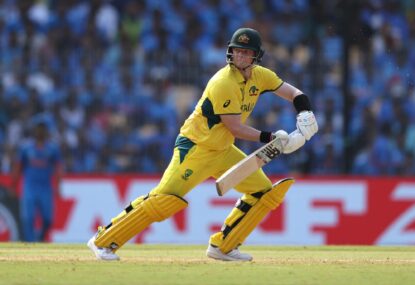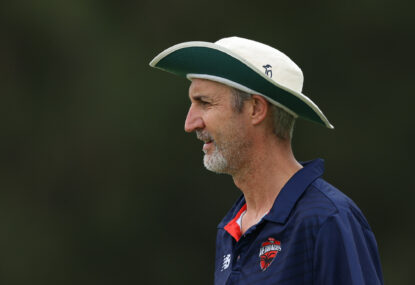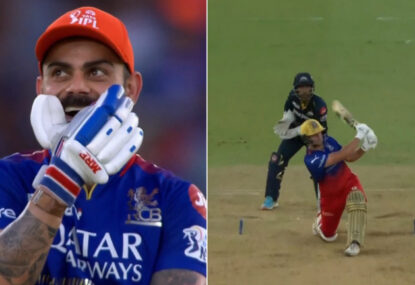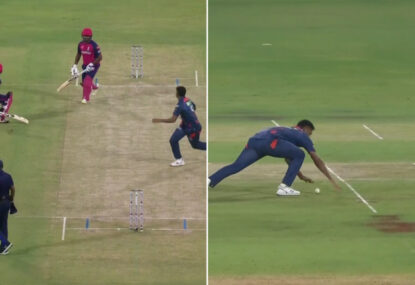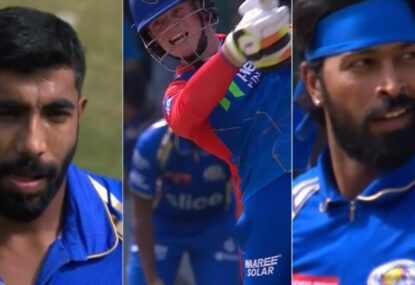We continue to look at the rise of the Baggy Green towards the late eighties.
There was to be further pain for Border with the “South African rebel tours”, as Prime Minister Bob Hawke labelled the 16 players who headed to the republic as traitors. With the Gleneagles agreement defied, Australia lost seven of their Test players selected for the 1985 Ashes series.
They would be led by Kim Hughes, who Border had replaced as Australian captain.
Publicly, few of those who were in a position to discuss this will, but it was a depressed and reluctant Border who was left behind to lead the salvage operation of what had become a depleted Australian team.
The disloyalty of the players was said to affect the new captain deeply.
In 1985, Border and Australia headed to England to defend the Ashes, of which they had only held for one reign. Despite being 1-1 after the first three Test matches, heavy defeats in the fourth (innings & 118 runs) and the fifth (innings & 94 runs) games ensured that England reclaimed the Ashes.
It would be the 29th time England had held the Ashes. In the 24 years that followed (to present day), England would only hold the Ashes four more times. But before the epoch of Australian rule could begin, there was still pain to be felt.
Later that year, New Zealand came to Australia and for the first and only time in history would win a Test series in Australia. At the end of the final Test, Allan Border would tender his resignation. It was difficult to ascertain whether or not the Baggy Green was decayed – as Richard Hadlee all but destroyed the Australians by himself, taking 33 wickets for the series.
A drawn series with India would hold one significant fact, the debut of a player who had played only a handful of state games – Steve Waugh.
The return series in New Zealand early in 1986 would offer no respite, with victory to the Kiwis in the final Test by 8 wickets handing them two consecutive series wins over Australia. It would not be until the end of 1987 that Australia would win another Test series; ironically against New Zealand – a near five-year hiatus of a series win.
It was here that Australia, guided by Allan Border and Bob Simpson, began to plan the beginning of an empire, one that would rule – in sporting terms at least – longer than any other realm in history.
In 1987, so began the genesis by way of Australia winning their maiden one-day World Cup in India with a remarkable seven-run victory over England at Eden Gardens in Calcutta – to this date the closest final ever contested.
The year 1988 would be seen as a painful but necessary year for Australia, winning no more than one Test match against Sri Lanka in Perth as players such as David Boon, Dean Jones, and Ian Healy were teethed into world-class players.
Another series loss in Pakistan occurred, and the first three matches of five against the West Indies in Australia saw the Baggy Green’s suffer heavy defeats. But as 1989 dawned, they defeated the West Indies in the fourth Test in Sydney and took the fifth to a draw.
It was at this time a young New South Welshman, affectionately regarded as Tubby, would debut for Australia. Mark Taylor would eventually succeed Border as captain.
In June 1989, Australia travelled to England desperate to break a run of three consecutive series triumphs by the English. What happened was beyond even Border’s great expectations. With the aforementioned players developing, the Baggy Greens inflicted a 4-0 drubbing on England. It was the first time since 1934 they had recovered the Ashes away from home.
The momentous occasion marked the beginning of a 16-year reign of Ashes triumphs.
Australia survived 1990 undefeated at home – and Allan Border received Australian of the Year honours.
In 1990/91, Australia continued its strong hold on visiting England, defeating the old enemy 3-0 to record back-to-back Ashes triumphs for the first time since 1975. The defeats were by 10, 8 and 9 wickets respectively.
With the exception of a one-Test loss in New Zealand, it was not until 1991 that Australia lost another Test series – appropriately against the West Indies, who at this stage were embarking upon their own slow demise as overlords of World Cricket – yet remained unchallenged at the summit.
It was this series in the Caribbean in 1991 that Border believed Australia would be able to break its drought against the West Indies, and unofficially claim world supremacy. However, legends such as Greenidge, Richards, Marshall, Walsh and Ambrose ensured that the West Indies sustained the hold on their would-be challengers.
A 4-0 home series win against India hurled Australia into the 1992 World Cup as favourites. However, a surprise performance by New Zealand saw them dominate through the group stage, before losing twice to eventual champions Pakistan.
Nonetheless, this was the year when a young leg-spinner named Shane Warne would debut for Australia.
A series triumph against Sri Lanka followed, before a wounded West Indian team toured Australia with many of their stars retired. After three matches Australia led the series 1-0, thanks largely to a century to Border and 7/52 by Warne in the second Test.
Despite this, Australia would lose the fourth Test by one run and suffer humiliation on the bounce of Perth for the West Indians to take the series.
It would be the last time Australia lost at home for nearly 16 years.
In 1993, Australia again claimed the Ashes and then hosted New Zealand, winning 2-1. It was in this series that Australia would debut a young pace bowler by the name of Glenn McGrath.





























































































